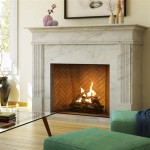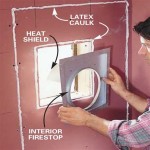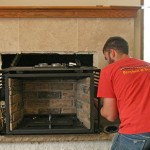Art Deco Fireplaces: A Fusion of Function and Opulence
Art Deco, a design movement that flourished in the 1920s and 1930s, left an indelible mark on architecture, furniture, and decorative arts. Characterized by its geometric forms, rich materials, and emphasis on streamlined aesthetics, Art Deco reflected the era's optimism, technological advancements, and embrace of modernism. Within the realm of interior design, the Art Deco fireplace stands as a compelling example of this stylistic ethos, seamlessly blending functionality with opulent ornamentation.
An Art Deco fireplace is more than just a source of heat; it is a statement piece, a focal point that embodies the era's emphasis on luxury and sophistication. These fireplaces often feature bold geometric patterns, stylized motifs, and the use of high-quality materials such as marble, granite, metal, and exotic woods. The design principles of Art Deco, including symmetry, repetition, and the use of stepped forms, are readily apparent in the construction and detailing of these fireplaces.
The impact of Art Deco fireplaces extends beyond their visual appeal. They serve as a tangible link to a bygone era, evoking a sense of glamour and sophistication that continues to resonate with design enthusiasts today. The enduring popularity of Art Deco fireplaces is a testament to their timeless appeal and their ability to complement a wide range of interior design styles, from minimalist to maximalist.
Key Characteristics of Art Deco Fireplaces
Several defining features distinguish Art Deco fireplaces from those of other periods. These characteristics are integral to understanding and appreciating the unique aesthetic of this design movement.
Geometric Shapes and Patterns: Art Deco design is fundamentally rooted in geometric forms. Fireplaces often incorporate strong lines, sharp angles, and symmetrical arrangements. Common geometric motifs include chevrons, zigzags, sunbursts, and stepped patterns. These elements are often rendered in contrasting materials or colors to further emphasize their visual impact. Instead of the flowing, organic lines of Art Nouveau which preceded it, Art Deco embraces a more structured and angular aesthetic, reflecting the machine age and the burgeoning industrial landscape.
Luxury Materials: The selection of materials is paramount in the creation of an authentic Art Deco fireplace. Marble, particularly black and white varieties or those with strong veining, is a frequent choice, lending an air of opulence and sophistication. Granite, with its durability and distinctive patterns, is also commonly used. Metal accents, often in chrome, stainless steel, or brass, provide visual contrast and enhance the overall sense of luxury. Inlays of exotic woods, such as ebony or rosewood, can add further richness and detail. The combination of these materials creates a visually stunning and tactilely appealing fireplace.
Stylized Motifs: Art Deco fireplaces frequently incorporate stylized motifs drawn from various sources, including ancient civilizations, nature, and the burgeoning world of transportation and technology. Egyptian motifs, such as lotus flowers and scarabs, were popular, reflecting the fascination with Egypt fueled by archaeological discoveries. Nature-inspired motifs, such as stylized flowers, leaves, and animal forms, were also common. Furthermore, motifs inspired by the speed and progress of the Machine Age, such as streamlined shapes reminiscent of automobiles, airplanes, and skyscrapers, were increasingly incorporated. These motifs are typically rendered in a highly stylized and abstract manner, reflecting the Art Deco aesthetic's emphasis on simplification and refinement.
The Evolution of Art Deco Fireplace Design
While the core principles of Art Deco remained consistent, fireplace designs evolved over time, reflecting changing tastes and technological advancements.
Early Art Deco (1920s): Fireplaces from the early Art Deco period often featured more intricate detailing and a greater emphasis on handcraftsmanship. Geometric patterns were often more complex, and stylized motifs were rendered with greater detail. The use of exotic materials was also more prevalent, reflecting the affluence of the era. Fireplace surrounds might feature elaborate carvings or inlays, and metal accents were often highly polished and meticulously applied. These fireplaces were designed to be showpieces, reflecting the era's emphasis on luxury and sophistication.
Mid-Art Deco (1930s): As the Great Depression took hold, Art Deco fireplace design became somewhat more streamlined and restrained. While luxury materials were still used, there was a greater emphasis on efficiency and functionality. Geometric patterns became simpler, and stylized motifs were less elaborate. The focus shifted towards creating fireplaces that were both aesthetically pleasing and practical. Streamlining became a dominant aesthetic, with curved forms and smooth surfaces replacing sharper angles and more ornate detailing.
Late Art Deco (1940s): The late Art Deco period saw a further simplification of fireplace design, influenced by wartime austerity and the changing social landscape. Materials became less extravagant, and geometric patterns were even more simplified. The emphasis shifted towards creating functional and affordable fireplaces. The use of durable, readily available materials such as concrete and brick became more common. While the influence of Art Deco was still evident, the overall aesthetic was more subdued and practical.
Incorporating Art Deco Fireplaces into Modern Interiors
Despite their historical origins, Art Deco fireplaces can be seamlessly integrated into contemporary interior design schemes.
Restoration and Preservation: For those fortunate enough to own an original Art Deco fireplace, restoration and preservation are essential. Careful cleaning and repair can restore the fireplace to its former glory, allowing its unique character and historical significance to shine. When restoring an Art Deco fireplace, it is crucial to use appropriate materials and techniques to maintain its authenticity. Consulting with a qualified restoration specialist is highly recommended.
Reproduction and Adaptation: If an original Art Deco fireplace is not available, reproduction or adaptation is a viable option. Many manufacturers offer high-quality reproductions that capture the essence of Art Deco design. Alternatively, existing fireplaces can be adapted to incorporate Art Deco elements, such as geometric patterns, stylized motifs, and luxurious materials. This allows homeowners to infuse their spaces with the elegance and sophistication of Art Deco without undertaking a full-scale renovation.
Modern Interpretations: Contemporary designers often draw inspiration from Art Deco principles to create modern interpretations of the classic fireplace. These designs often feature clean lines, geometric forms, and a focus on luxurious materials, but with a more minimalist and contemporary aesthetic. This allows homeowners to enjoy the timeless appeal of Art Deco while embracing a more modern sensibility. The key is to balance the iconic elements of Art Deco with the clean lines and functionality of contemporary design.
The integration of an Art Deco fireplace into a modern setting can create a striking contrast, serving as a focal point that adds character and sophistication to the space. Whether it is an original, a reproduction, or a modern interpretation, the Art Deco fireplace continues to captivate with its unique blend of function and opulence.

The Hulanicki Art Deco Style Fireplace Surround

Art Nouveau Tiled Convector Fireplaces Stovax

Wyndham Art Deco All Tiled Fireplace Westcombes

Chesneys Hulanicki Art Deco Fireplace Fireplaces

Wyndham Art Deco All Tiled Fireplace Twentieth Century Fireplaces

Keaton Art Deco Marble Fireplace Twentieth Century Fireplaces Interior

Stovax Art Deco Wood Mantel Mantels

12828 Jpg

Fireplacing In The Home Art Deco Fireplace Rustic Living Room Furniture

Art Deco Fireplace Kent Company








